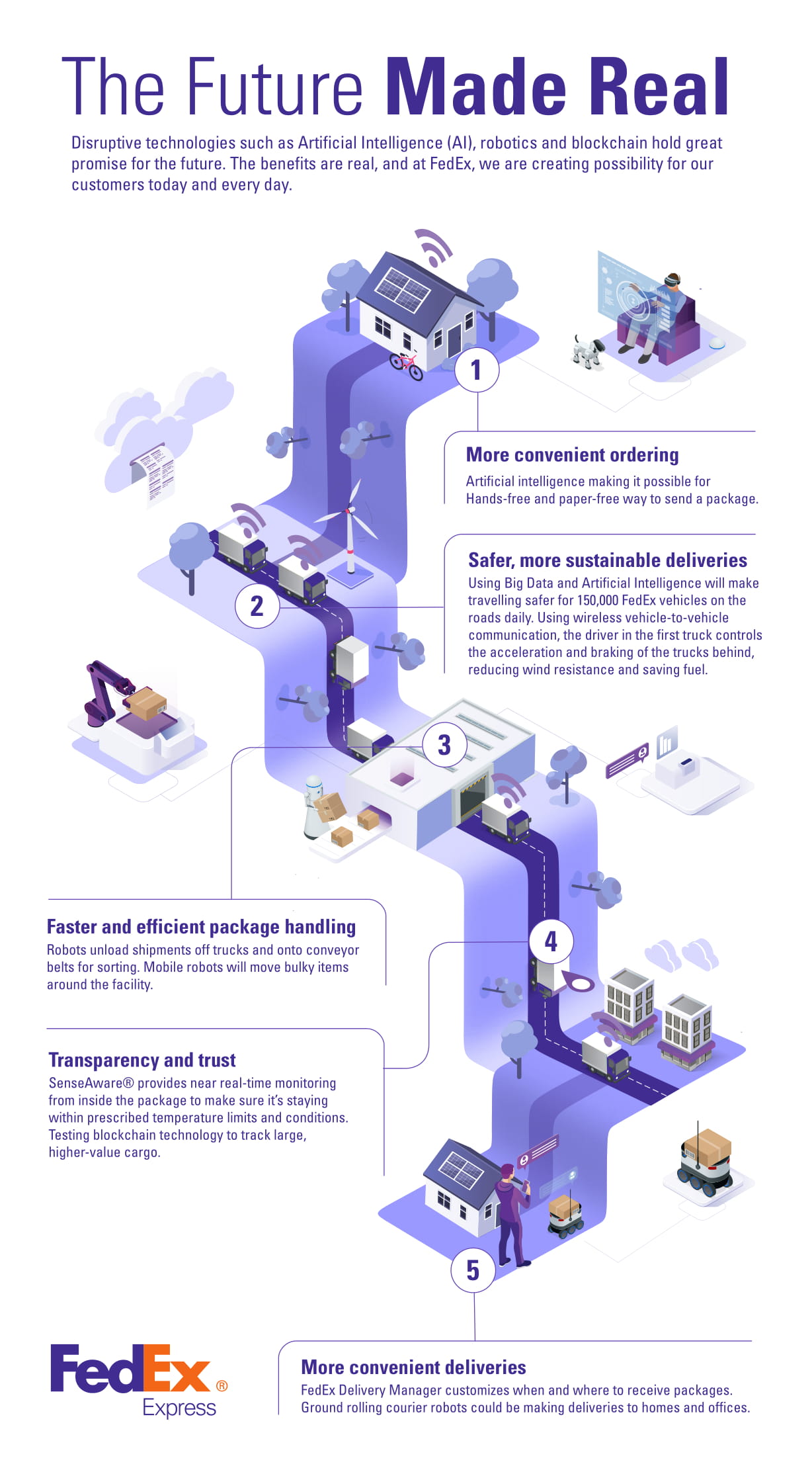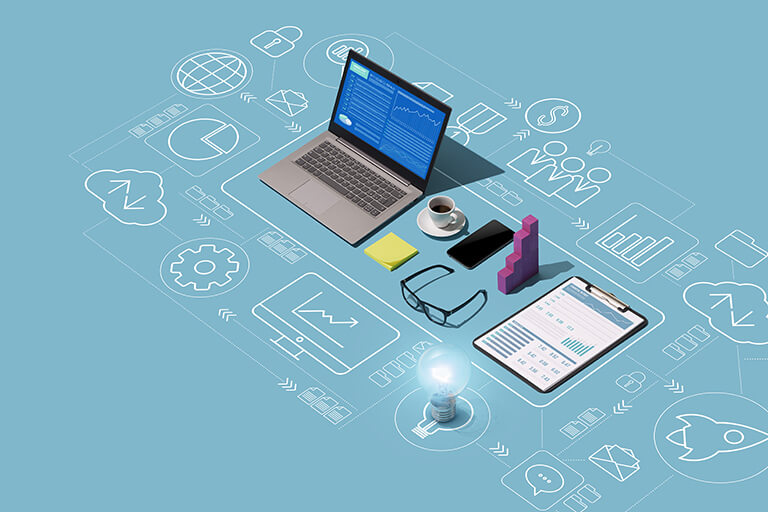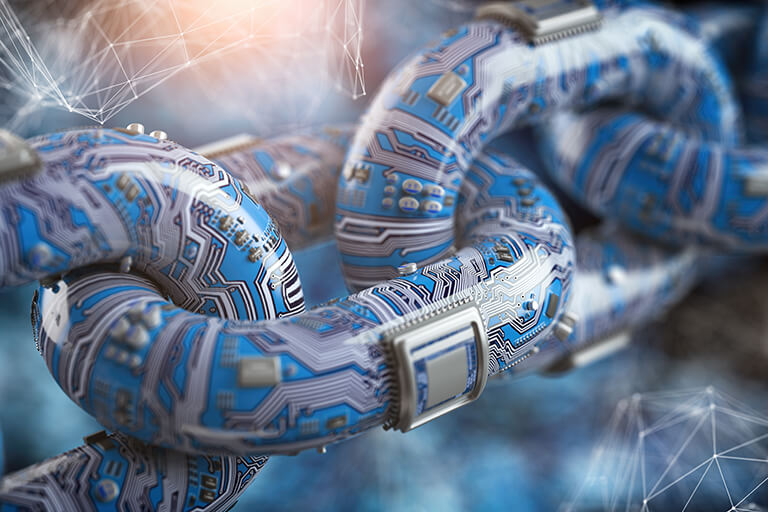The Future Made Real
Karen Reddington, President, Asia-Pacific Division (APAC), FedEx Express, shared how innovative technologies and solutions are creating possibilities for customers and businesses:
At FedEx, we’re asking, “what are the right technologies that we can develop and deploy today that will make a tangible difference to our customers, our people, and our communities?” It’s really all about how we can create possibilities with the promise of new technologies.
Latest forecasts expect digital transformation will add an estimated US$1.16 trillion to Asia Pacific’s GDP by 2021[1]. But relatively few consumers – despite being on the receiving end of these technologies – have yet to grasp many of the changes that are happening now. The benefits are real and, in the case of FedEx, being realized by our customers and their customers today and every day.
The numbers are only part of the story. What really makes us excited is the potential to make life more convenient, efficient, safe and predictable.
Intuitive convenience
Paperwork can be time-consuming and tedious and we’re constantly looking at how to cut it down. We’re developing the AI-enabled Alexa app to initiate shipments so that customers can talk their way through the process, hands-free, paper-free, with the digital assistant asking the right questions to help them complete the job[2]. Already, our online virtual assistant is replying to FedEx-based questions instantly on our website. And it’ll only get smarter as more people use it.
Automation for efficiency and safety
Boxes as large as refrigerators simply do not fit on the conveyor belt in our warehouses. So we get a team of mobile robots, nicknamed Lucky, Dusty and Ned after the Three Amigos movie – to move these unwieldy items around the facility. Unloading shipments off trucks and onto the conveyor belts for sorting can be mundane, so we’re testing robotic automation to do this tedious job. This way, our people can be freed up to do work that requires human dexterity, such as fitting odd-shaped items into tight spaces[4]. And we are investing in courier robots that can carry heavier loads and travel further. It’s a very real possibility that these robots will be making deliveries to homes and offices in the years ahead.
With over 180,000 FedEx vehicles on the roads every day, the logical next step is autonomous vehicles. Nine in 10 road accidents are caused by human error. Leveraging big data and AI technologies will make our operations significantly safer and more efficient, particularly for heavy long-haul trucks.
While trucks that drive themselves are expected to be in the shipping industry within the next decade, we are already testing cutting-edge technology that links trucks into small groups called “platoons”. Using wireless vehicle-to-vehicle communication, the driver in the first truck controls the acceleration and braking of the trucks behind him[5]. This technology was designed to reduce wind resistance and save fuel.
Building trust and transparency
Sometimes, for example, it’s not just about knowing where the package is, it’s also about knowing how it is. Medicines, life-saving human organs, fresh food and flowers, and other perishables all need to be shipped at strictly regulated temperatures and conditions. We developed a device that provides near-real time monitoring from inside the package. SenseAware can alert shippers whether the cargo is staying within prescribed temperature and humidity limits or has been exposed to excessive light or other factors that might compromise shipment quality.
Blockchain, meanwhile, offers a new level of transparency that can mitigate some of the most common disputes between customers sending and receiving goods involving time stamps, payments and damages.
Blockchain uses computer code to record every step of a transaction and delivery in a permanent digital ledger, which cannot be changed unless all involved agree. It even has the potential for the first time ever to make that information available to anybody, pushing new levels of trust and transparency for cross-border logistics. We are already testing the blockchain to track large, higher-value cargo, and working closely with the Blockchain in Transport Alliance or BiTA to ensure that every player in the logistics ecosystem can gain from this technology.
The Internet of Things, AI, automated transportation and other technological advances have been offering the promise of disruption for a while. While FedEx has a clear vision of what lies ahead, we are also in many ways living out that future by developing innovations today that directly benefit our customers. Our purpose as a company is to create possibilities for businesses, and we know that the smart use of innovative technologies helps us do that in a profound and valuable way[6].
*Click image to enlarge infographic
[1] “Digital transformation to contribute more than US$1 trillion to Asia Pacific GDP by 2021; AI is primary catalyst for further growth”, Microsoft Asia News Center, Feb 2018.
[2] Some mirrored messaging, http://www.fedex.com/be/enews/2018/february/logistics-tech-trends.html
[3] FedEx Corp Facts, FedEx website, May 2018.
[4] https://www.nytimes.com/2018/03/18/technology/fedex-robots.html
[5] “The future tech trends set to revolutionise logistics”, FedEx website, Feb 2018.
[6] Speech “March Madness, iPhones and Robots” by Frederick W. Smith at National Conference on Undergraduate Research, April 2017.




















 The Latest
The Latest